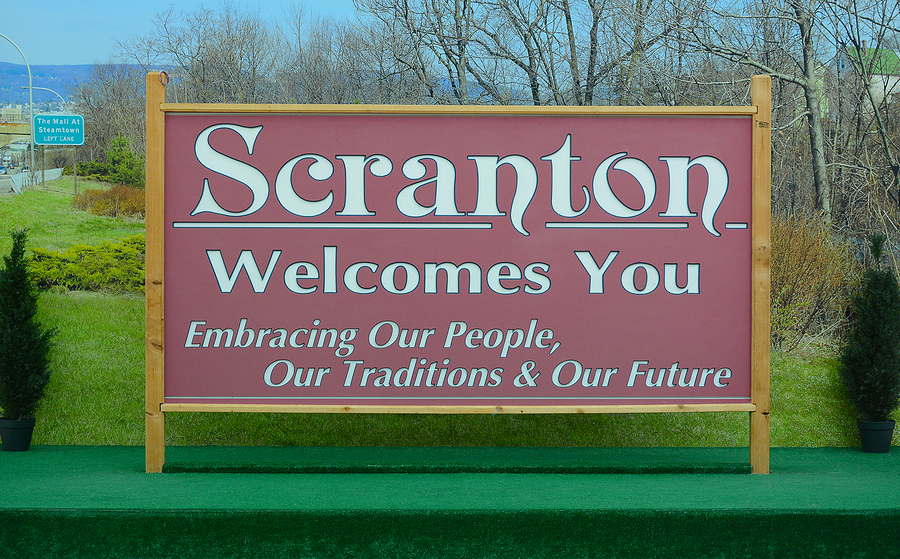
Last month, I wrote about the publication of Glenna Lang’s excellent new book Jane Jacobs’s First City: Learning from Scranton, Pennsylvania. The arrival of the book coincided with Observe Scranton: Jane Jacobs’s First City Festival, five days of in-person and online events presented by Center for the Living City and Marywood University. I was born and raised in Scranton, so the book has particular importance for me.
In this post, I’ve asked Glenna, who is based in Cambridge, Massachusetts, about her career, the new book, and her reflections from the days in Scranton in which she presented the fruits of her research to the city of Jane Jacobs’s birth.
1. Congratulations on the new book! Can you provide some general impressions of what it was like to discuss/promote it in Scranton, during the Observe Scranton week? Related to that, when you are in Scranton, either now or on previous research trips, does the ‘ghost’ of the city of Jane Jacobs’s years appear in your mind?
It was very gratifying to present the book to people from the Scranton area who were interested in their city and familiar with contemporary Scranton. I did not have to set the stage with descriptions of the landscape or neighborhoods, for example. But it was even more gratifying to see their reaction to learning more about their city’s history and feeling connected to it and proud of it. Only a small portion of Scrantonians today know who Jane Jacobs was and why she is important, so it feels good to make them aware. I absolutely feel that being in Jane’s home, school, library, etc. allows you to experience what she might have felt and lets history come alive. Studying maps helped me place landmarks and buildings so that I could imagine seeing what Jane saw, e.g. a giant coal breaker she would pass on her way to high school, even though it is no longer there.
2. Even though you wrote a previous book about Jane Jacobs, it would seem that given your professional history, that the new book is somewhat of a professional departure for you. Would that be an accurate way of looking at the project?
I see this book as a logical extension of what I have always been interested in. As a child, I devoured books, especially novels, and I loved to write. I was also the class artist. In high school I took art classes on Saturdays at the well-known Art Students League in Manhattan, which was a great pleasure. My personal artwork often involved cities. I always loved cities (detested suburbs) and loved the array of experiences cities offered. I often took the subway to Greenwich Village, a favorite destination. After creating picture books for children illustrating classic poems, I wanted to write and illustrate a book that might encourage young people to be active in their communities. I ended up working on a book idea presenting Jane Jacobs, whose The Death and Life of Great American Cities I had grown up seeing on my parents’ book shelves. I went to Scranton for this book, and was smitten by Scranton’s architecture and its grit. I loved gritty old industrial cities both visually and for the kind of people I remembered from childhood and my parents’ and grandparents’ stories. The more I learned about Jane and her city, the deeper I wanted to dig to uncover the influence each had on the other.
3. I realize I’m asking you to speculate here, but if Jane Jacobs had grown up in Scranton 2003-2021, and soon after moved to New York City without going to college, could her career have evolved in a similar way to how it did during the early and mid-20th century? This would take into account areas like educational and professional degrees/certifications/credentials, and the effect of social media. As I mentioned in the review, she was an ‘influencer’ before we had the current terminology; but would that be possible in today’s conditions?
With Jane’s personality, determination, and confidence, she might have been able to survive growing up in recent times as an uncredentialed autodidact. But it is much more difficult to do this now. In her books, she pointed out the “difference between a degree and an education.” I totally agree with her on this. After graduating from a highly respected, very academic college, I went to an unusual art college, which a few years prior had stopped having any requirements and had discontinued grades and rules. At the end of each semester, you discussed your work with a “review board” comprised of two students and two teachers. Each student was respected and motivated by a desire to create meaningful art. The idea embodied in your art was most important. I have taught at that same school for 25 years now and see that many students, above all, value getting a degree. Times have changed. Jane appreciated alternative types of education, such as in Girl Scouts or the International Correspondence School in Scranton. She knew what she wanted, where she was going, and how to get there. Not many people would take that risk today.
